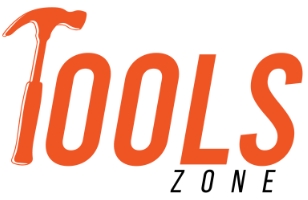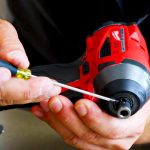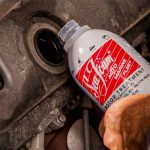Table of Contents
Drilling holes and driving screws through any material is easy as long as you have the right tools for the job. Stroll down the power tool aisle at the hardware store and you’ll see a variety of drills and drivers that look fairly similar. But don’t be fooled. Each has subtle differences geared to accomplish different jobs, and one of the most frequently asked questions is “what are the main differences between an impact driver and a hammer drill?” If you’re stumped, the answer is mechanisms and applications. So, whether you’re in the market for a jack-of-all-trades drill or you have a more specific project in mind, learn how hammer drills and impact drivers differ before you buy.
Mechanism
Perhaps the best way to understand which drill is best for a particular task is to compare their mechanisms and the types of drill bits and drivers they use.
- Hammer Drill: The action of a hammer drill is right there in the name: it’s a hammer and a drill working in tandem. While the drill rotates, a gear-driven cam introduces a linear striking motion along the path of the drill bit. In effect, it combines chiseling and drilling with the same tool. It’s an action that’s particularly effective in drilling brick, cinder block, concrete, and other similar materials. However, while heavy-duty slotted drive system (SDS) models are capable of drilling through walls several feet thick, it is not an effective way to drill wood, plastic, or metal. To do that, the hammer action needs to be disengaged. Many hammer drills allow this, though some SDS models do not.
- Impact Driver: Describing a tool as an “impact driver” might suggest it has a similar action to a hammer. In some ways it does, though an impact driver provides increased rotational energy, better known as torque. Inside the impact driver’s body, there is a heavy-duty spring. It is compressed every half turn and then releases, delivering tremendous force. It makes a similar sound to a hammer drill, but the energy goes in the same direction as the chuck rotation, not in a straight line along the drill bit. Thus the focus of the force is to drive screws and other fasteners or undo them. Early impact drivers were very much brute force, all-or-nothing tools. Modern versions offer greater flexibility with variable speed.
Components
Each of these tools has a different chuck and operates using different bits.
- Hammer Drill: The majority of hammer drills have a self-centering three-jaw chuck. These are often keyless, but heavy-duty models have a keyed chuck, which allows for a tighter grip on the drill bit. SDS hammer drills have a spring-loaded chuck, with ball bearings that lock into grooves on SDS drill bits. A sliding sleeve releases them.
- Impact Driver: Impact drivers don’t have a chuck but instead, use a quick-release clamp designed to accept various kinds of bits with a 1 by 4-inch hexagonal shank. Most of these bits are for driving, though you can buy HSS drill bits with 1-by-4-inch shanks for occasional drilling duties.
Applications
Now that you know how each type of drill works, it’s probably a lot clearer which jobs each one is best for. However, there can be overlaps so let’s take a closer look.
- Hammer Drill: A hammer drill uses a particular type of drill bit designed specifically for tough materials. A hammer drill is a tool that you would turn to for all kinds of tasks from relatively light-duty tasks, like when installing new house numbers on your stone-veneered exterior wall, or hanging shelving on an interior brick wall, to drilling holes through brick or block walls for installation of electrical conduits or water pipes. Hammer drills don’t just boreholes into masonry though. Most allow you to turn the hammer function off. So, with standard drill bits, you can use them for the same tasks as cordless drills/drivers. However, care has to be taken. They still deliver a lot of power and can easily break small-diameter drill bits. Additionally, even with the hammer function turned off, most people don’t use them as their regular drill/driver because they tend to be heavier and often require two hands to operate properly.
- Impact Driver: Impact drivers are all about rotational force. In essence, they don’t do anything that a cordless drill/driver doesn’t do, but they bring much more power to the task. Typically if you wanted to insert a 3-inch screw into a wooden post with a drill/driver you would first need to drill a pilot hole, then swap the bit over to drive the screw. The impact driver, by contrast, can drive that screw straight into lumber almost effortlessly due to the amount of torque generated. They handle large screws and fasteners far more quickly and efficiently than a cordless drill/driver making them a much better choice for heavy-duty woodworking projects like replacing deck boards or building a pergola.
Power Specifications
In general, 12V drills and drivers are light-duty homeowner tools. 20V models suit the needs of more serious DIY enthusiasts and professionals. Currently, only cordless SDS hammer drills offer more power, with 40V and 60V tools aimed squarely at contractor use. However, each type of drill and driver has specifications that are particular to its type and purpose.
Almost all drills and drivers have variable speeds, activated by the trigger. However, this relies on the user exerting sustained pressure, which is easy at full speed but not so much at lower revolutions. Better tools offer two or three-speed ranges, so even when the trigger is fully depressed, a slower speed is reached. This gives greater control, which is often useful when using small drill bits, or when starting to drive screws.
Weight & Size
Physical size and overall weight can be important considerations for whichever type of drill or driver you buy. A heavy tool can result in operator fatigue, something that’s made worse if you regularly have to work overhead.
Hammer drills can be especially bulky. Many, particularly SDS models, have an additional handle at the front that gives a clear indication that the tool needs to be operated with both hands. This should not be ignored. If a drill bit jams while cutting through thick masonry or rock, the drill body itself will try to rotate. This happens suddenly and because of the weight and the energy transferred can cause serious wrist injury to those who are unprepared. Similar though less severe injuries are possible when you use impact drivers, so caution is advised. Always make sure you have a firm grip on the tool.
Conclusion
These were all of the key differences between a hammer drill and an impact driver. We hope this article cleared up some of your confusion and answered any questions you may have had. Lastly, always remember to wear protective gear for safety when operating power tools like these.










Leave a Comment